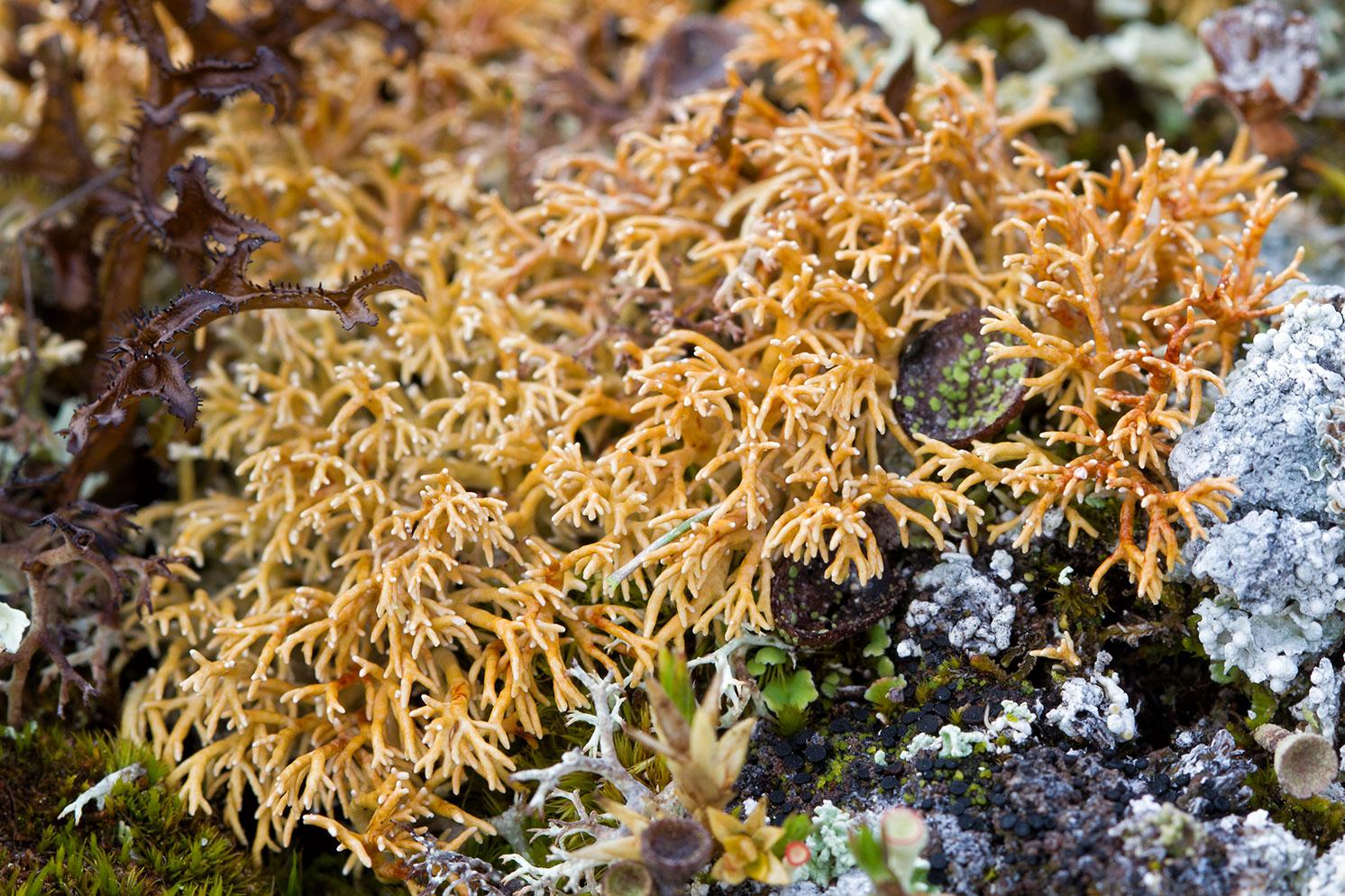
Consortium of Lichen Herbaria
- building a Global Consortium of Bryophytes and Lichens as keystones of cryptobiotic communities -
- Home
- Search
- Images
- Species Checklists
- US States: O-Z >
- US National Parks
- Central America
- South America
- US National Parks
- Southern Subpolar Region
|
Family: Sphaerophoraceae |
Nash, T.H., Ryan, B.D., Gries, C., Bungartz, F., (eds.) 2004. Lichen Flora of the Greater Sonoran Desert Region. Vol 2. Life habit: lichenized Thallus: slender, terete, or with a weak dorsiventral orientation of the branching system and of the algal layer, forming cushions or patches main branches: distinct, +richly branched secondarily, the branching anisotomic to isotomic dichotomous, often with bundles of short coralloid branchlets surface: pale brown, gray, or almost white, lacking soredia, isidia and pseudocyphellae cortex: 60-200 µm thick, continuous and of equal thickness photobiont: primary one a green alga (Cystococcus), secondary one absent medulla: white, often I+ violet Apothecia: terminal, globose, opening through cracks in the thalline envelope mazaedium: black, +surrounded by irregular flaps of thalline tissue during spore dissemination epihymenium: soon disintegrating, brown to green, HNO3+ red hymenium: soon disintegrating, paraphyses: thread-like, strongly carbonized, fragile, soon disintegrating; hypothecium: hyaline to blackish brown asci: Calicium-type, unitunicate, thin walled; cylindrical formed singly from ascogenous hyphae with croziers, soon disintegrating, 8spored ascospores: dark violet-blue (green when young), simple, spherical to broadly ellipsoid, 8-12(-15) x 7-11 µm, the wall hyaline but almost completely covered by a thick, dark, carbonized granular ornamentation (epispore) added to spore wall inside the ascus Conidiomata: pycnidial, in tips of terminal branchlets; conidiophores: type V or VI of Vobis (1980), branched, with conidiogenous cells both terminal and intercalary conidia: hyaline, simple, ellipsoid to obovate, 3-4.5 x 1.5-2 µm Secondary metabolites: the orcinol depsidone sphaerophorin in all species, some species (including S. globosus) have ß-orcinol depsides in addition Substrate: on rocks or soil in arctic-alpine areas, or on bark or wood, espeically in wet oceanic forests Geography: bipolar, South America, Antarctica, Europe, Macaronesia, Asia, Arctic and western North America, and Australasia. Notes: Sphaerophorus is distinguished within the Sphaerophoraceae by having broadly ellipsoid spores, its unique spore ornamentation, and the production of thamnolic and squamatic acids. It is also characterized by having a globose thalline receptacle and medium-sized spores. It is easily recognized by the whitish to grayish or brownish thallus with coralloid branchlets, with chlorococcoid algae and containing sphaerophorin, and (when fertile) by its mazedeoid apothecia. It is not likely to be confused with any other genus in the Sonoran region. Previously more species were recognized, but Wedin (1995) separated several of these into the genus Bunodophoron. |
Powered by Symbiota









